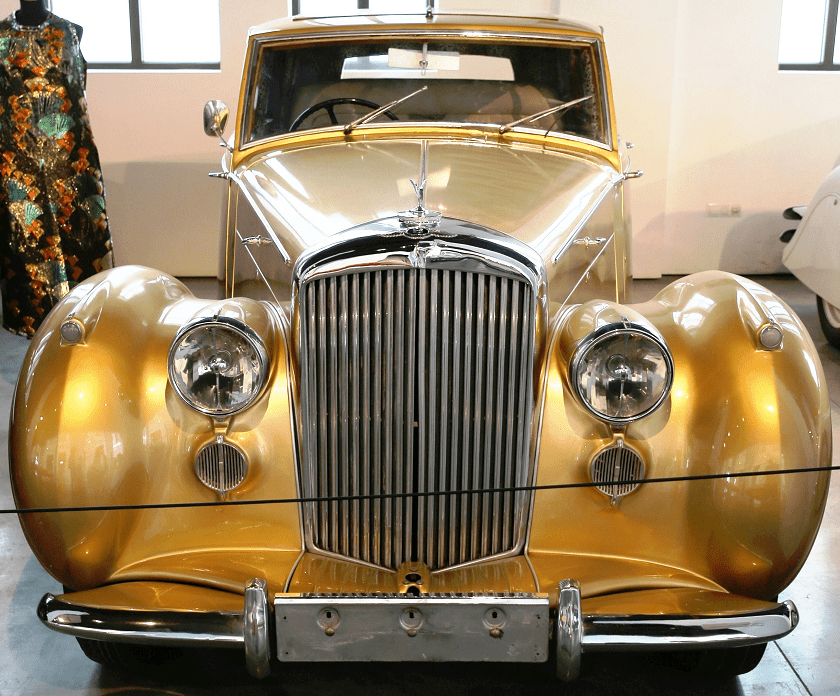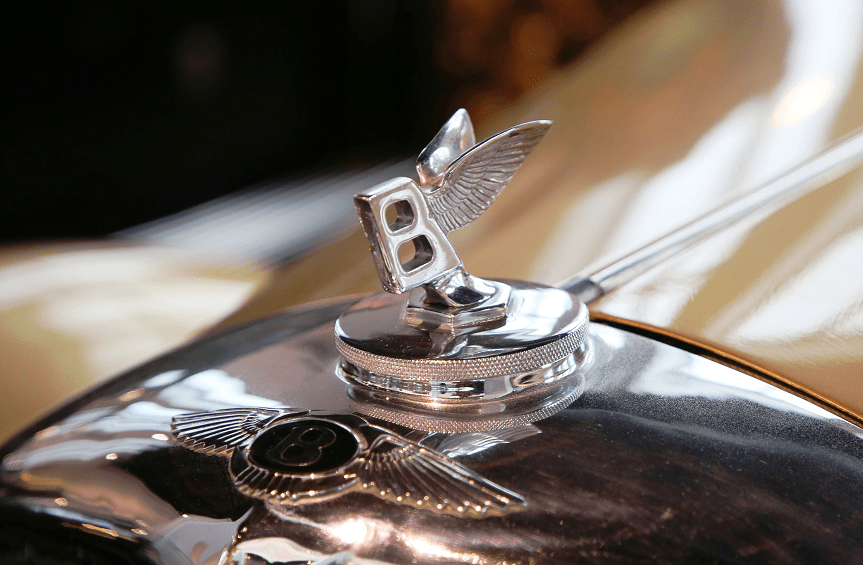Bentley Mark IV. Golden version from Malaga Museum (Spain)
Made in USA in 1949, V6, 137 hp, 4.300 cc.
The Bentley Mark VI is an automobile from Bentley which was produced from 1946 until 1952.
The Mark VI 4-door standard steel sports saloon was the first post-war luxury car from Bentley.
Announced in May 1946 and produced from 1946 to 1952 it was also both the first car from Rolls-Royce with all-steel coachwork and the first complete car assembled and finished at their factory.
These very expensive cars were a genuine success; long-term, their weakness lay in the inferior steels forced on them by government’s post-war controls.
In 1944 Rolls-Royce executive W. A. Robotham saw that there would be limited postwar demand for a Rolls-Royce or Bentley rolling chassis with a body from a specialist coachbuilder, and negotiated with the Pressed Steel Company a contract for a general-purpose body to carry four people in comfort on their postwar chassis behind a Rolls-Royce or Bentley radiator.
Though he stretched the demand to 2000 per year, Pressed Steel were “nonplussed” by the small demand.
Chassis continued to be supplied to independent coachbuilders, which produced four-door saloon, two-door saloon and drophead coupe models.
Out of the coachbuilt cars the most sought after now are the 241 cars built by H.J. Mulliner.
This first Bentley factory finished car was given the name Bentley Mark VI standard steel sports saloon. This shorter wheelbase chassis and engine was a variant of the Rolls-Royce Silver Wraith of 1946 and, with the same standard steel body, became the cautiously introduced Silver Dawn of 1949.
In 1952 both Rolls-Royce Silver Dawn and Bentley Mk VI standard steel bodies were modified to incorporate a boot of about twice the size and the result became known as the R type Bentley based on the Chassis number at which the change took place.
A very few Mark VI engines and chassis were modified to provide higher performance and sold to be bodied by selected coachbuilders as the first Bentley Continentals.














